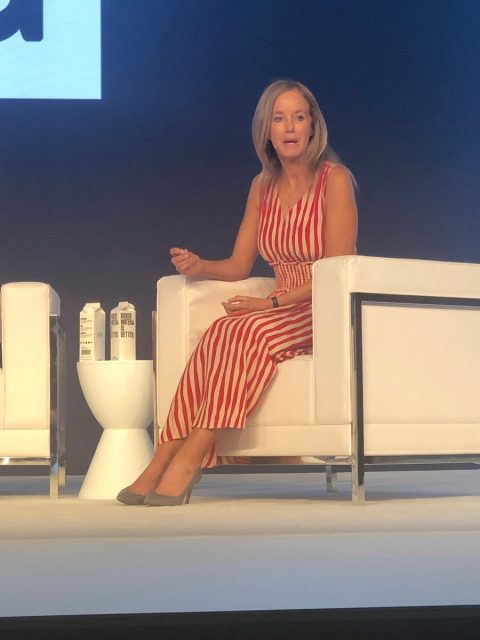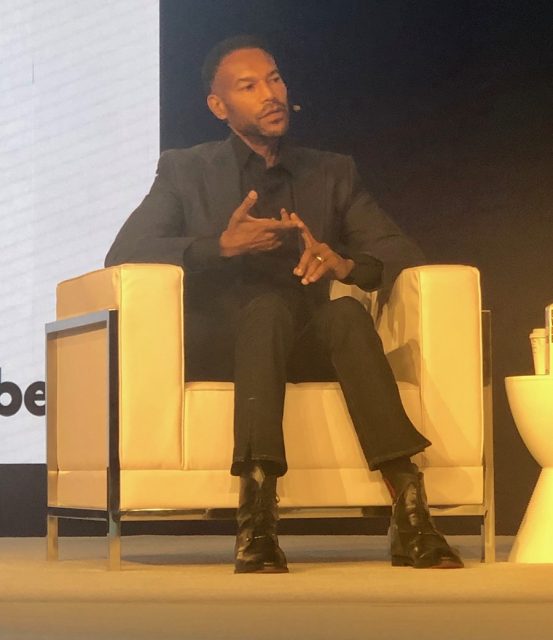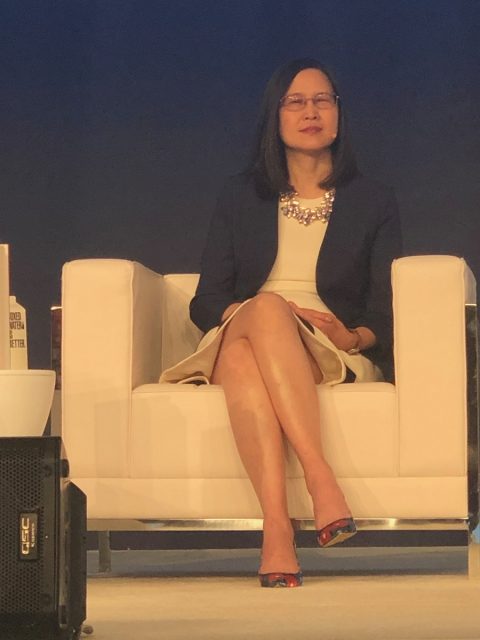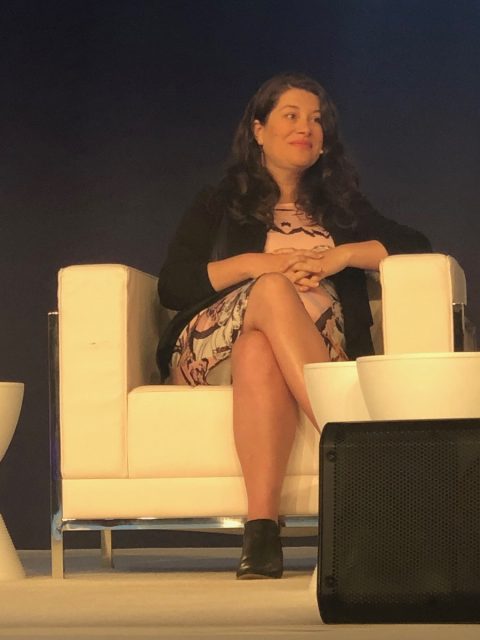We know a more inclusive world is better for all of us, but we all have different opinions and different views, and conversations about diversity and inclusion are difficult. Crucial, but difficult.
That’s why we’re so proud every year to host our Diversity & Inclusion breakfast at Subscribed. This year, we brought this discussion to the mainstage so more people could participate in this increasingly topical subject.
Our illustrious panel included Cynthia Owyoung, VP of Diversity and Inclusion at Charles Schwab (@CindyOwyoung @CharlesSchwab); Lauren Aguilar, Diversity and Inclusion Partner at Forshay (@drlaurenaguilar @ForshayTalent); and Tony Prophet, Chief Quality Officer at Salesforce (@tony_prophet @salesforce); and was moderated by Julian Guthrie, Journalist, Author Alpha Girls (@JulianGuthrie).

As Guthrie notes, “The time we are in now is a critical time to advance the causes that are important to us. There is progress, but progress has stalled.”
Together, panelists shared practical tips for what individuals — as well as companies — can do to walk the walk of diversity and inclusion. As Guthrie encouraged the audience, “There’s great power in the individual. What can individuals do when there are a ton of obstacles? We as individuals have a lot of potential. As you advance your own career you can advance others. That is powerful.”
Read on for more highlights, best practices, and inspiration:
What We’re Up Against…
“Diversity training and inclusion programs are found effective for those who already embrace the concept, but they’re not effective for those who need it the most. Those who hold power need the training the most but are the most resistant to change.” – Julian Guthrie, Journalist, Author Alpha Girls

“We know men are promoted based on potential and women are promoted based on performance.” – Julian Guthrie, Journalist, Author Alpha Girls
“In the context of meetings, men create ⅔ of all interruptions. And they interrupt women 3x more than they interrupt men. The other ⅓ of interruptions are women. And women interrupt other women 90% of the time. This means there are people who are not being heard in our meetings. Are we capturing all the creative potential on our teams? Call out interruptions. Identify the interruption. It’s not policing the conversation; it’s making sure that people can finish their thoughts and get credit.” – Lauren Aguilar, Diversity and Inclusion Partner at Forshay
Transparency and Accountability
“You need to be transparent with your stakeholders. If you go to our website (salesforce.com/equality), you can see the statistics of our representation — not because we’re done with our work, but for the sake of transparency” – Tony Prophet, Chief Quality Officer at Salesforce
“There needs to be clear accountability for execs. Every 30 days, we give our execs with a large enough team a scorecard that asks key questions like how many women do you have on your team, how many did you hire this month, how many did you promote?” – Tony Prophet, Chief Quality Officer at Salesforce

The Importance of Community and Allies
“Employee resource groups form a sense of community. These groups are volunteer-based and self-organized, but sanctioned by the company.” – Tony Prophet, Chief Quality Officer at Salesforce
“I wrote about women who were the “onlys” – only women at the board meetings, at the VC table. They didn’t have networks until later in the career. But they did have allies. Allies can play a key role. If you have the opportunity to be an ally to an under-represented group, that’s a great opportunity.” – Julian Guthrie, Journalist, Author Alpha Girls
“Folks that have a majority identity have to be an ally, and a mentor, and a sponsor, and an advocate, and a champion. Saying that you’re an ally doesn’t mean you agree on everything. But it means you’re like family: you’re going to be with and support people even if you don’t agree.” – Tony Prophet, Chief Quality Officer at Salesforce
Proven Approaches to Encourage Diversity and Inclusion
“I’ve come to the realization that it’s not about implementing this new program but having a culture shift within the organization that starts at the top.” – Cynthia Owyoung, VP of Diversity and Inclusion at Charles Schwab

“I believe in a head, heart, and hands methodology. Head is knowing your data. We need to understand our data to understand the landscapes of our companies, beyond straight demographics but looking into important people processes across the lifecycle. With hiring, where are we losing out opportunities for diversity? At what stage? There’s always one place where there’s a statistical difference. That’s the place that needs more attention. The heart side of the framework is about having brave conversations, building empathy, and getting everyone to have the same language. Hands is about tools and strategies. In our D&I work, we find evidence-based tools effective. What does research say? How can we translate the research into actionable practices.” – Lauren Aguilar, Diversity and Inclusion Partner at Forshay
“Always hire the best person. Talent is uniformly distributed. Over time if you’re hiring from a diverse slate, the organization will ultimately look like society.” – Tony Prophet, Chief Quality Officer at Salesforce
“Putting data with the storytelling is so important for change management.” – Lauren Aguilar, Diversity and Inclusion Partner at Forshay
“There’s no silver bullet, but what has worked for me is changing hearts and minds one conversation at a time. I can spout off data all day and it doesn’t do anything, you don’t see any change in actual behaviors. What really motivates people is when you can get them connected to an individual story. Then they can understand D&I isn’t us vs them, it’s all of us. We’ve all been in that place where we haven’t been included in something in our lives.” – Cynthia Owyoung, VP of Diversity and Inclusion at Charles Schwab
“I need leaders to not just think about it, but to do something about it. I focus on process. How do you adjust your processes so that they become a forcing function for people to examine their biases. For example, we use a tool called Textio – which looks at biased language in job advertisements and gives you suggestions for how to make the ads more gender-neutral to increase the diversity of applicants that come in which leads to more diverse hires because you start with a bigger funnel. This is how we enable leaders within our companies to drive more inclusive decision making around hiring.” – Cynthia Owyoung, VP of Diversity and Inclusion at Charles Schwab
“Psychological safety means that you can be your authentic self and you won’t be shamed or ridiculed for having a different opinion. A way to create this is for leaders to be vulnerable and not be afraid to share mistakes. When leaders create team cultures of safety, their teams are more likely to share their own mistakes which leads to more creativity, more productivity, and more success on teams.” – Lauren Aguilar, Diversity and Inclusion Partner at Forshay

“We have “Favorite Mistakes Friday.” We share our mistakes whether it’s a typo in an email or something bigger. This creates a vibe of growth mindset.” – Lauren Aguilar, Diversity and Inclusion Partner at Forshay
Quick Takes
“Just showing up for pride as an executive is a huge, huge statement.” – Tony Prophet, Chief Quality Officer at Salesforce
“Data is the fuel of great management. When you see the data ask: Does that look like society?” – Tony Prophet, Chief Quality Officer at Salesforce
“If you have women in top leadership of a company, it leads to on average, $43 more million revenue per year. This is data we can all get behind!” – Lauren Aguilar, Diversity and Inclusion Partner at Forshay
Subscribe to Diversity and Inclusion
As Owyoung commented, “We all want to believe we’re good people with good intentions. But there are intentions and there is impact. You have to turn that intention into impact.” Attending this session, joining this conversation — these are all first steps into turning intention into impact. Now we just need to keep the conversation going!

Want more? Check out highlights from last year’s #SubscribeToDiversity session.